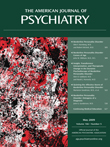Healing the Hardware of the Soul: Enhance Your Brain to Improve Your Work, Love, and Spiritual Life
Dr. Daniel Amen states that his book, Healing the Hardware of the Soul , will help readers achieve better “brain-soul communication.” Dr. Amen is a self-described clinical neuroscientist, psychiatrist, and brain-imaging specialist, who (according to the cover of his book) has performed more than 45,000 brain imaging studies, primarily single photon emission computed tomography (SPECT) scans, on patients in the Amen Clinics. The data that support this use of SPECT imaging for diagnostic evaluations of children and adults seldom have been submitted for publication to peer-reviewed scientific journals. This book, therefore, offers an opportunity to examine the rationale for this approach.
Dr. Amen makes a good case for the use of brain imaging to explain and medicalize mental disorders. However, most of the evidence is anecdotal. He recounts numerous examples of how he has used the results of brain imaging studies to illuminate the biological origins of symptoms and syndromes for his patients. What is not so clear from these anecdotal examples is exactly how he has used SPECT scanning to inform his treatment decisions. While these imaging studies undoubtedly educate patients and families about the fact that psychiatric disorders are bona fide medical illnesses, it is not clear how the SPECT image provides reliable information that informs clinical decisions. For each of the vignettes Dr. Amen presents, many psychiatrists would have chosen treatments similar to those he used when confronted with the particular symptoms he describes, based solely upon clinical judgment. There is no systematic analysis of the 45,000 imaging studies to demonstrate how Dr. Amen’s approach is superior to treatment-as-usual by a psychiatrist. Thus, there is also no evidence presented to justify exposing patients to the radiation of a SPECT scan and to support the considerable expense to patients, families, and their insurers.
Dr. Amen segues from his brain imaging work to self-help approaches for psychological distress. Some of the techniques he describes are unproven methods of his own invention; others are based on his own strongly held religious beliefs; still others are methods of unproven efficacy, such as eye movement desensitization and reprocessing. He attempts to ground and justify his approaches in clinical neuroscience, but his justifications come across as post hoc rationalizations for his preferred approaches. Dr. Amen does practice what he preaches: he states that he benefited from his own self-help approach, most notably to manage the stress of an investigation by the Medical Board of California for his unorthodox diagnostic and treatment approaches (an investigation that he says vindicated him). While his self-disclosure is laudable, it does reinforce the lack of evidence that his costly and invasive approach to treatment leads to better outcomes.
To return to the theme of the title of the book, Dr. Amen moves one step past Descartes. He writes that the mind and the soul are in the brain, based on numerous clinical examples of how disruptive behavior and mental disorders are reflected in SPECT scans he has performed. He dips into the research of prominent neuroscientists to show that in normal individuals, meditative and feeling states also are reflected in patterns of brain activity. However, the reader who has any degree of familiarity with mental illness and brain science is left unconvinced that his highly commercialized use of scanning is justified. Dr. Amen’s self-help approaches and his invocation of the linkage between brain and soul appear as little more than an attempt to dress his treatment approaches in the garb of popular neuroscience. He has published a series of cases describing his methods, but he has not subjected his treatment approaches to the level of systematic scientific scrutiny expected for scientifically based medical practice.



